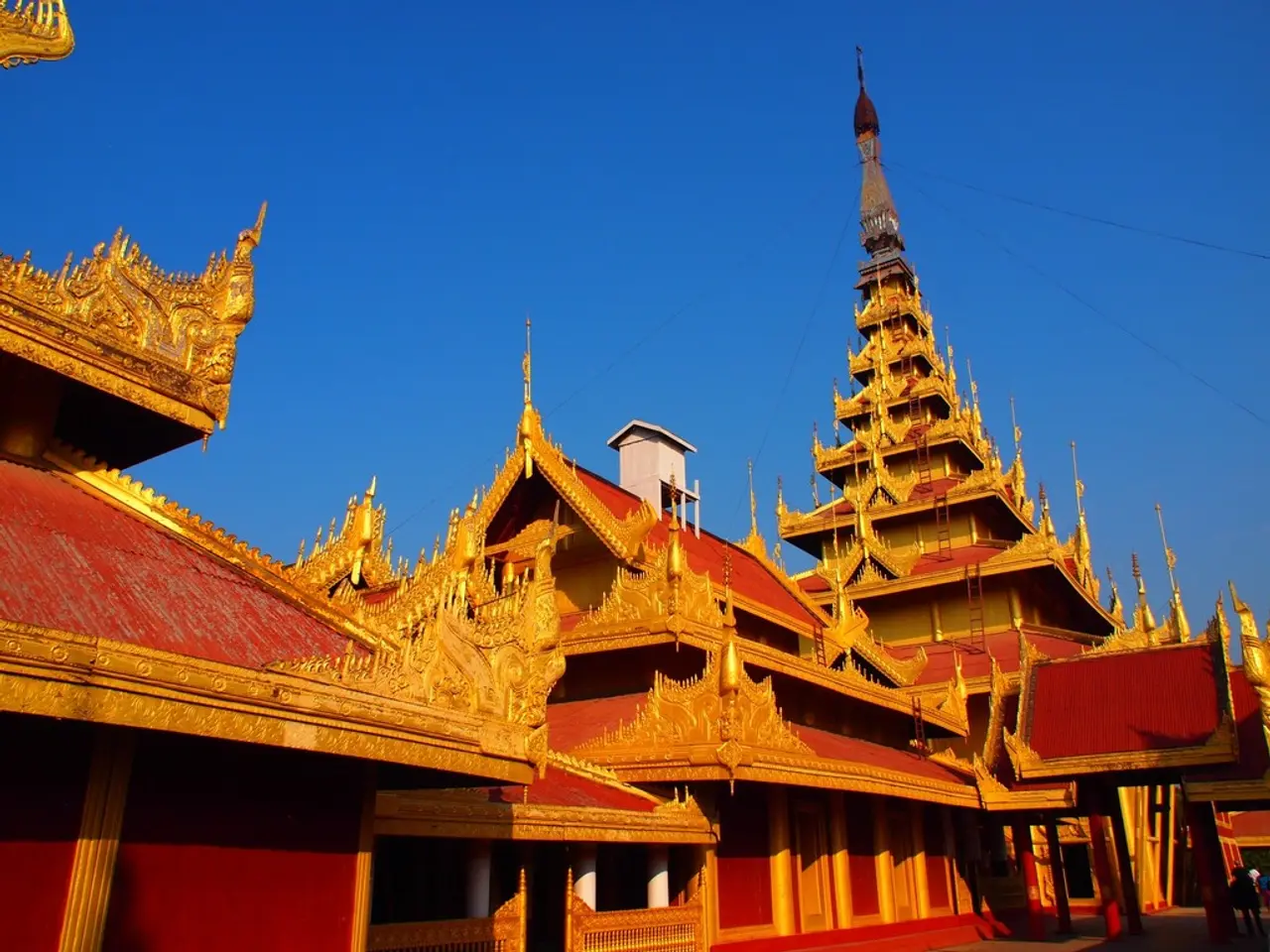Historical and Spiritual Crossroads in Con Son: A Blend of Past and Divine Influences
The Significance of Côn Sơn Kiếp Bạc in Vietnam's Cultural Landscape
Nestled in the heart of Hải Phòng City, Côn Sơn Kiếp Bạc stands as a testament to Vietnam's rich history, culture, and spirituality. This renowned heritage site, recognised by UNESCO in 2025, forms part of the Yen Tu – Vinh Nghiem – Con Son – Kiếp Bạc World Cultural Heritage complex[1][2][3].
Historically, Côn Sơn Kiếp Bạc is deeply intertwined with the Trần Dynasty, particularly Trần Hưng Đạo, a national hero and revered warrior who defended Vietnam against Mongol invasions. The Kiếp Bạc Temple within the site is dedicated to him, symbolising his enduring legacy as a protector of the nation and women, and a figure deeply embedded in Vietnamese cultural consciousness for over seven centuries[1].
Culturally, Côn Sơn Kiếp Bạc is significant for its role in the development of Trúc Lâm Zen Buddhism, a uniquely Vietnamese Zen Buddhist tradition founded in the 13th century by Emperor Trần Nhân Tông, who abdicated his throne to become a monk. This school integrates Mahayana Buddhism, Confucianism, Taoism, and indigenous Vietnamese beliefs, representing a harmony of philosophies that shaped Vietnam’s spiritual identity and culture[2][3][5].
Spiritually, the site functions as a vibrant centre combining worship of Buddhas, national heroes, ancestral spirits, and other deities, symbolising the fusion of religious and national traditions. It has remained a living cultural and spiritual hub, embodying ideals of peace, compassion, and harmony with nature, hallmarks of Trúc Lâm Buddhism and the humanistic philosophy promoted by the Trần kings[1][3].
The surrounding landscape—mountain ranges and rivers—enhances the spiritual atmosphere, making it a tranquil place for pilgrimage, meditation, and worship across Vietnamese history and today[1][2].
Kiếp Bạc Temple, an important relic within the site, combines the regions of Vạn Yên (Kiếp Village) and Dược Sơn (Bạc Village). The temple attracts a large number of tourists and was recognised as a Special National Heritage in 2012.
In summary, Côn Sơn Kiếp Bạc represents:
- A historic site tied to key figures of the Trần Dynasty and Vietnamese national identity.
- A cultural landmark exemplifying the birth and evolution of Trúc Lâm Zen Buddhism and Vietnamese syncretic spiritual practices.
- A spiritual center where the worship of Buddhist, national, and ancestral figures converge in a sacred landscape that nurtures Vietnam’s cultural continuity and peace philosophy[1][2][3][5].
The upcoming Côn Sơn Kiếp Bạc Autumn Festival 2025 promises to be a significant event, not only an occasion to pay tribute to ancestors but also demonstrating a commitment to preserving and promoting the values of this World Cultural Heritage site in modern life. The "Culture, Tourism, Trade Promotion Week" lasting from October 7 to 11 will be a significant highlight[4].
[1] https://whc.unesco.org/en/list/1533 [2] https://www.britannica.com/topic/Cong-Son-Kiep-Bac [3] https://www.vietnamtourism.com/destinations/haiphong/con-son-kiem-bac [4] https://www.vietnamnet.vn/en/entertainment/313130/con-son-kiem-bac-autumn-festival-2025-promises-to-be-a-significant-event [5] https://www.britannica.com/topic/Truc-Lam-Buddhism
- Visitors to Côn Sơn Kiếp Bạc can explore a QR code-based augmented reality (AI) tour that provides insights into the site's rich history, culture, and spiritual significance.
- The home-and-garden sector could benefit from the promotion of environmentally friendly practices within the conservation efforts of Côn Sơn Kiếp Bạc, that emphasize the importance of maintaining harmony with nature in one's lifestyle.
- Travelers planning their trips to Vietnam may be interested in integrating Côn Sơn Kiếp Bạc into their itinerary, as the location offers a glimpse into both the country's historical and cultural roots.
- As the events of the Côn Sơn Kiếp Bạc Autumn Festival 2025 are conducted, attendees are encouraged to engage in thoughtful discussions about the responsible trade of traditional medicine and crafts in the rural areas surrounding the heritage site, emphasizing preservation and sustainability.




